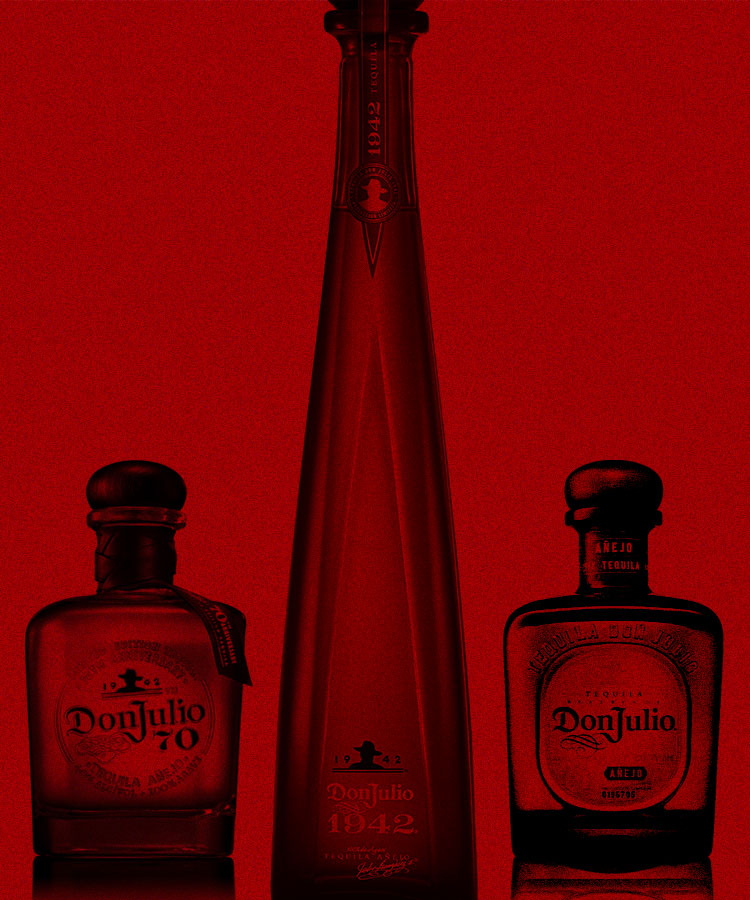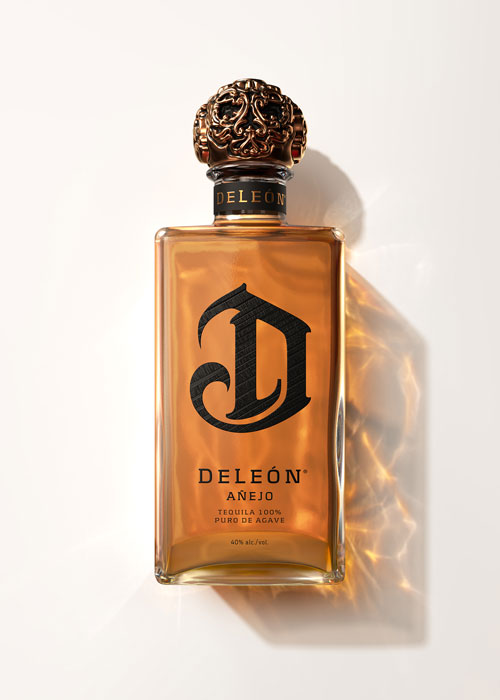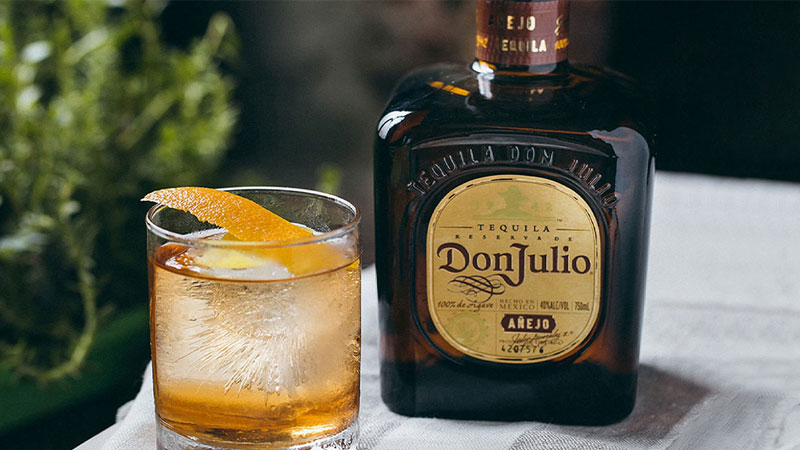
Most American tequila drinkers are acquainted with the agave spirit’s silver and gold expressions, but to stop your exploration of tequila here is a disservice. When it comes to tequila, these styles are just the beginning.
True appreciators of the spirit know that there are five distinct expressions of tequila — silver, gold, reposado, añejo, and extra añejo — each showcasing different characteristics of the agave plant, complexities, flavor profiles, and unique production processes.
Whether you’re a tried-and-true connoisseur or a curious novice, getting to know tequila’s premium expressions —añejo and extra añejo — will take your experience, and your home bar, to the next level. After all, beautifully crafted tequila is a spirit worth sipping, savoring, celebrating, not to mention, collecting.
Are you ready to meet your next favorite must-have tequilas? We’ve got the lowdown on what makes tequila’s top shelf expressions stand out from the crowd, and why you’re going to want to add a bottle (or six) to your collection.
What Makes an Añejo or Extra Añejo Different From Other Tequila Expressions?
The complexity of tequila really begins to bloom once you start getting into the spirit’s añejo, or more mature, expressions. Crafting beautifully aged añejos and extra añejos requires more aging time and attention to detail than younger expressions in order to coax out higher levels of complexity in the agave spirit.
A perfect añejo or extra añejo will not only improve what the spirit already has to offer — adding depth, beauty, and dimension — but it will do so without overshadowing the essence and characteristics of the agave plant. If a good blanco tequila can be thought of as an artistic interpretation of the agave it’s made from, consider the añejo and extra añejo expressions as detailed decorative frames that surround the canvas.
To produce remarkable and consistently excellent añejo and extra añejo tequilas, a skilled master distiller must consider and adapt to several variables during the tequila-making process. Much like with a good Scotch, Cognac, or fine wine, time, technique, barrel material, and temperature are all factors that can affect the final taste, feel, and flavor of the tequila.
Blanco tequilas are usually bottled straight after distillation with little to no aging. Añejos are required to be aged for a minimum of one to three years, specifically in oak barrels that hold no more than 600 liters. This extended aging period goes well beyond the minimum two-month “resting” period required for a reposado. Additionally, there is no wood type requirement for barrels used to age reposados.
What to Know About Añejo
During its time in the cask, the añejo will take on a delicate amber hue and more complex flavor profile. A good añejo presents a subtle sweetness and features characteristics from the casks in which it was aged, such as hints of warming spices and a faint woodiness.
Ultra-premium Tequila Don Julio Añejo is made from blue Weber agave that is pressed and fermented after roasting for 72 hours in brick masonry ovens. It is then double-distilled in small batches using the same traditional methods founder Don Julio González introduced 80 years ago. After distillation, the spirit is aged for 18 months inside reclaimed white American oak ex-bourbon barrels.
“You get a lot of honeys, dried fruits like figs and dates, a little orange, and you never lose sight of those agave aromas and flavors,” says Jorge Raptis, national tequila educator for the brand. For Raptis, Tequila Don Julio Añejo is the bottle he finds himself coming back to again and again. “It’s really very versatile — you can make a lot of cocktails that are spirit-forward, like an Old Fashioned, or drink it neat on the rocks,” he explains. “That’s why I love it.”
Luxury tequila producer DeLeón does something a little different when it comes to its añejo. Ultra-premium DeLeón Añejo begins its year-long aging process in American oak and is finished in fine French oak wine casks. Time spent in the oak helps to mellow and soften the spirit and imparts rich, caramel notes with a wisp of toasted oak and subtle dried fruit, while the French wine casks leave the tequila with a soft and silky profile, layered with toasted vanilla bean.
What to Know About Extra Añejo
Extra añejo is the crown jewel of tequila expressions and is worth just as much appreciation and reverence as a fine Cognac or sought-after Scotch. And, similar to a fine Cognac or whisky, its crafted complexity is meant to be savored through sipping. The time and expense needed to produce an extra añejo results in it being tequila’s rarest category, though it’s also the most creative and varied.
“Time is something that doesn’t come easy — it’s a luxury to have,” says Raptis. “And when you take your time to craft something that is going to become unique and different — that is the main thing.”
By definition, an extra añejo must be aged at least three years in wood, but anything beyond this in the production process is up to the discretion of the producer and master distiller. This room for flexibility and creativity has resulted in a niche market full of unique and collectable bottles.
For example, Tequila Don Julio Ultima Reserva may be Tequila Don Julio’s newest variant, but it has been 15 years in the making. As the brand’s newest extra añejo, this bottle is a very special tequila, made from the final agave plants that Don Julio González planted with his family back in 2006. After harvest and distillation, this 36-month aged Extra Añejo has been rested in ex-bourbon American oak barrels, and then (rather uncommonly) finished in Madeira wine casks from Portugal.
Produced in an ultra-limited quantity, Tequila Don Julio Ultima Reserva takes sippers on a journey that starts with toasted oak and caramel on the nose, features balanced hints of apricot and orange, and has a smooth honeyed agave finish.
How to Pick the Best Añejo and Extra Añejo Bottles For Your Collection
For the curious and collectors alike, Raptis offers a tip for selecting a bottle of añejo or extra añejo for your collection: Be wary of any overly aged añejos. At a certain point the extra time in the barrel isn’t doing the tequila any favors. “Sometimes they let it rest in the barrels too long, and there’s a bit of time that you will completely lose all of the characteristics of your spirit,” he says. “You will not be able to tell where it came from, the process that took place to produce it — everything will be overwhelmed by oak. Sometimes you don’t even know what type of spirit it is, it’s so powerful.”
Whether you’re an amateur or experienced spirit collector, adding a bottle or two of an ultra-premium or luxury añejo and extra añejo to your bar is a great place to start expanding your tequila experience. A beautiful, artfully crafted and versatile añejo or prized, unique extra añejo is sure to impress guests and makes for an ideal celebratory pour for special occasions.
Bottles to add to your collection:
- DeLeón Añejo
- Tequila Don Julio Añejo
- Tequila Don Julio 1942
- Tequila Don Julio 70 Crystal Añejo
- Tequila Don Julio Ultima Reserva
This article is sponsored by Diageo.


